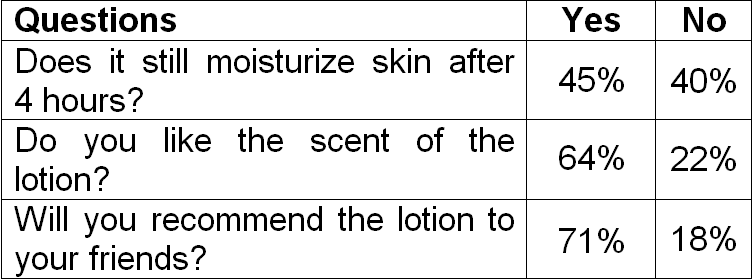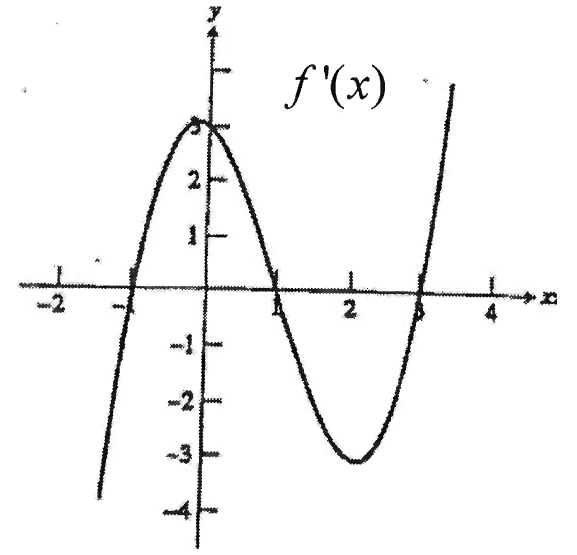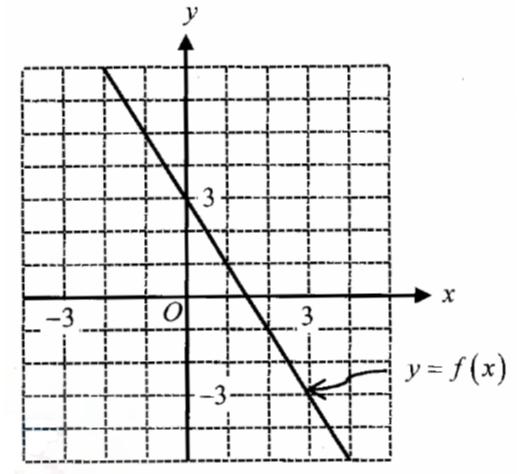PROBLEMS INVOLVING BAR GRAPH
Bar graph is a graphical chart which is used to compare the events or frequencies of the given data. This graph is drawn to represent frequency distribution table.
The following types of graphs are for one independent and one dependent variable.
Types for one independent and one dependent variable:
- Vertical
- Horizontal
- Range
Example 1 :
The number of bed sheets manufactured by a factory during five consecutive weeks is given below.
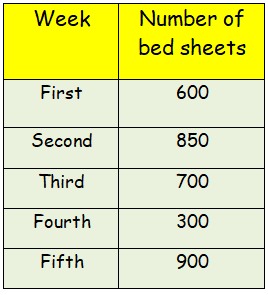
Draw the bar graph representing the above data.
Solution :
Draw the horizontal and vertical axis, Scale of vertical axis is 100 units.
Horizontal axis - Week
Vertical axis - Number of bedsheets
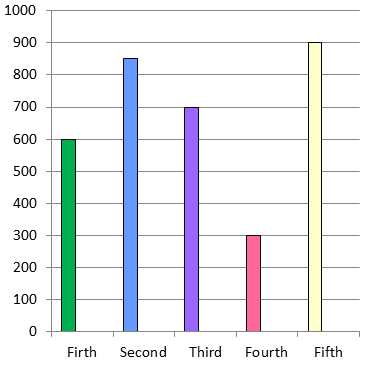
Example 2 :
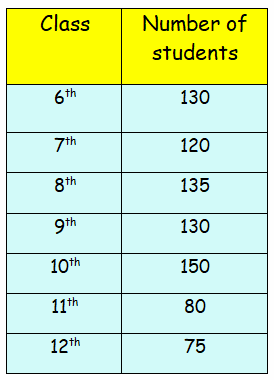
Draw the bar graph representing the above data.
Solution :
Draw the horizontal and vertical axis, Scale of vertical axis is 20 units.
Horizontal axis - Class
Vertical axis - Number of students
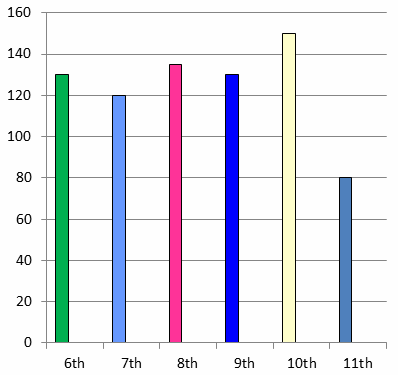
Example 3 :
The number of absentees in class VIII was recorded in a particular week. Represent this data on the bar graph
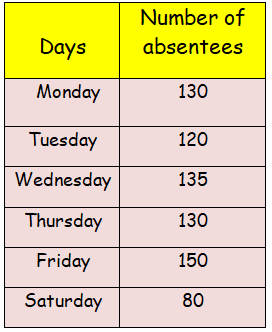
(a) On which day the maximum and minimum students were absent?
(b) How many students were absent on Wednesday and Friday?
(c) On which days the same number of students was absent?
Solution :
Draw the horizontal and vertical axis, Scale of vertical axis is 20 units.
Horizontal axis - Days
Vertical axis - Number of absentees
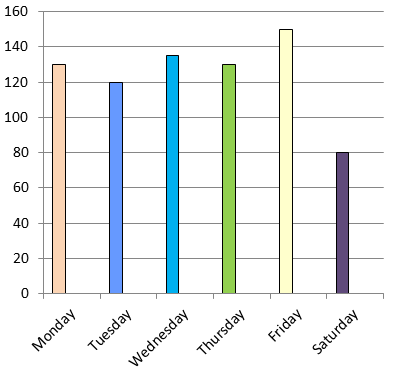
(a) By observing the graph, on Friday the maximum number of students were absent.
(b) Number of students were absent in Wednesday and Friday is
= 135+150
= 285 students
(c) On Monday and Thursday same number of students were absent.
Example 4 :
The number of trees planted by Eco-club of a school in different years is given below.
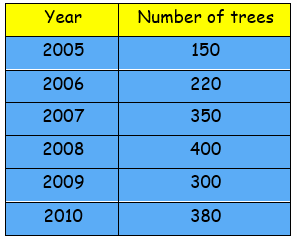
Draw the bar graph to represent the data.
Solution :
Draw the horizontal and vertical axis, Scale of horizontal axis is 50 units.
Horizontal axis - Number of trees
Vertical axis - Year
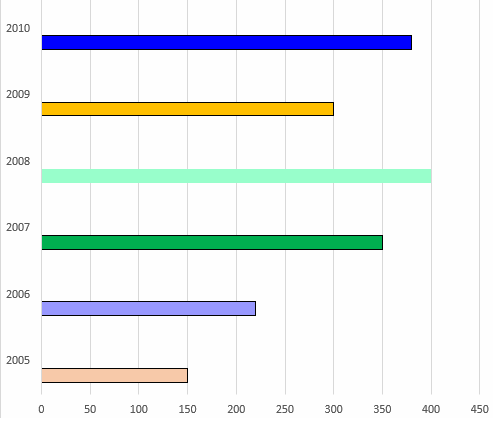
Example 4 :
A randomly selected sample of small businesses has been asked, “How many full-time employees are there in your business?”. A column graph has been constructed for the results.
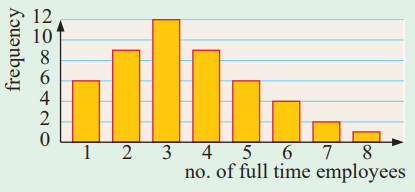
a) How many small businesses gave data in the survey?
b) How many of the businesses had only one or two full-time employees?
c) What percentage of the businesses had five or more full-time employees?
Solution :
1 employee = 6 times
(a) Number of small businesses gave data
= 6 + 9 + 12 + 9 + 6 + 4 + 2 + 1
= 49
(b) Number of businesses have one or two full time employees
= 6 + 9
= 15
(c) Number of businesses have 5 or more full time employees = 6 + 4 + 2 + 1
= 13
Percentage = (13/49) x 100%
= 26.53%
Example 5 :
The frequency column graph alongside gives the value of donations for an overseas aid organization, collected in a particular street.
a) Determine the total number of donations.
b) For the donations find the:
i) mean ii) median iii) mode.
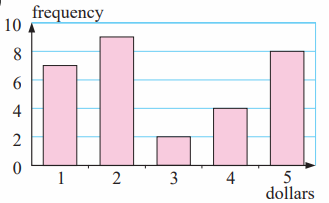
Solution :
(a) Total number of donations = 7+9+2+4+8
= 30
(b) Mean = Amount of donation collected / number of donation
= [1(7) + 9(2) + 2(3) + 4(4) + 8(5)] / 30
= (7+18+6+16+40)/30
= $2.9
Median :
Number of donations = 30 (even)
= 30/2
= 15th
So, $2 is the median.
Mode :
$2 is most repeated donation. So mode is $2.


Apart from the stuff given above, if you need any other stuff in math, please use our google custom search here.
Kindly mail your feedback to v4formath@gmail.com
We always appreciate your feedback.
©All rights reserved. onlinemath4all.com
Recent Articles
-
Digital SAT Math Problems and Solutions (Part - 101)
Jan 26, 25 07:59 PM
Digital SAT Math Problems and Solutions (Part - 101) -
AP Calculus AB Problems with Solutions (Part - 7)
Jan 26, 25 06:56 AM
AP Calculus AB Problems with Solutions (Part - 7) -
Digital SAT Math Problems and Solutions (Part - 103)
Jan 25, 25 01:00 AM
Digital SAT Math Problems and Solutions (Part - 103)
